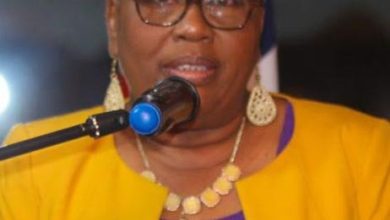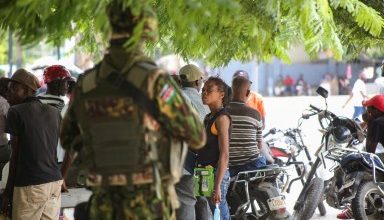Prevention based programs are the path to public safety under Mayor Adams

We all know gun violence is a huge issue across the country. Unfortunately, there is no single way to measure how gun violence impacts us all.
We can track it in statistics and study it in stories. We can take stock of it in conversations with parents. We can hear it in the silence gun violence leaves behind.
These are different measures — they offer different perspectives. In January of 2022, statistics told us one certainty about gun violence: there was too much of it in New York City.
When Mayor Eric Adams took office that month, he got to work on a signature campaign promise: making public safety a priority. His administration mapped out a blueprint to curb gun violence that recognized the underlying root causes while calling for a range of solutions. He convened city agencies and community leaders to work together and deliver real solutions.
Part of that blueprint focuses on targeted intervention efforts, which Mayor Adams made clear was not enough. The administration also focused on prevention, a focused approach of stopping people from picking up a gun in the first place. It is why we reaffirmed our commitment to preventing gun violence by making a record $86 million investment in our city’s Crisis Management System.
This investment is part of a larger preventive strategy the administration has undertaken in putting money back into prevention programs. That includes a record expansion of both Summer Rising and the Summer Youth Employment Program to reach hundreds of thousands of young people, providing real job experience and a safe space during the summer days. We know summer jobs reduce gun violence today by engaging at-risk youth, while reducing future gun violence by laying the foundation for successful careers.
This investment in our youth under Mayor Adams is why the Office of Neighborhood Safety, which manages violence prevention programs as part of the Crisis Management System (CMS), has transitioned to the Department of Youth and Community Development (DYCD). By plugging the Office of Neighborhood Safety into DYCD’s broad community networks and longstanding ties with the New York City Police Department, we can amplify our efforts and double down on our commitment to keep young people safe.
Part of that blueprint focuses on targeted intervention efforts, which Mayor Adams made clear was not enough. The administration also focused on prevention, a focused approach of stopping people from picking up a gun in the first place. It is why we reaffirmed our commitment to preventing gun violence by making a record $86 million investment in our city’s Crisis Management System.
This investment is part of a larger preventive strategy the administration has undertaken in putting money back into prevention programs. That includes a record expansion of both Summer Rising and the Summer Youth Employment Program to reach hundreds of thousands of young people, providing real job experience and a safe space during the summer days. We know summer jobs reduce gun violence today by engaging at-risk youth, while reducing future gun violence by laying the foundation for successful careers.
This investment in our youth under Mayor Adams is why the Office of Neighborhood Safety, which manages violence prevention programs as part of the Crisis Management System (CMS), has transitioned to the Department of Youth and Community Development (DYCD). By plugging the Office of Neighborhood Safety into DYCD’s broad community networks and longstanding ties with the New York City Police Department, we can amplify our efforts and double down on our commitment to keep young people safe.
Through CMS, the city works directly with community groups to engage at-risk individuals, mediate conflict, and have access to a coordinated suite of services that prevent gun violence. The mayor’s historic investment in this means an expansion to over 40 community-based organizations, reaching 31 neighborhoods where two-thirds of shootings take place.
Like the mayor’s blueprint, CMS organizations recognize that the best time to prevent gun violence is before it ever begins. Sometimes that means diffusing disputes before they flare up. At times, the best people to mediate conflict on the streets are those with deep community ties and lived experience of gun violence, such as formerly incarcerated individuals who have turned their lives around. Through CMS, these credible messengers receive the resources they need to track problems as they surface, engage individuals, and de-escalate situations.
Other times, it means steering individuals at high risk of gun violence into a coordinated suite of services that offer employment programs, legal support, mental health resources, and more. CMS groups can help participants enroll in job trainings and secure vocational certificates. Participants can meet with mentors who help them polish their resume and visit development centers to connect candidates with jobs. CMS groups can also offer legal services to help people navigate life after a conviction, connect to mental health care to address trauma, and more.
CMS is about more than just uprooting the systems beneath gun violence. It is about planting new seeds, replacing crime and conflict with careers and stable foundations. And the proof that it works is in the data. From 2010 to 2019, neighborhoods with CMS programs saw a 40 percent reduction in gun violence compared to just 31 percent in neighborhoods without these programs.
These stats are promising, but even one shooting will always be too many. It is why we must all continue to do our part to end gun violence. By working together, coordinating across the city, and making record investments in violence prevention programs, we can get it done.
Keith Howard is the commissioner of the Department of Youth and Community Development and AT Mitchell is the founder of Man Up! and co-chair of the Gun Violence Prevention Task Force.





